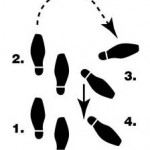Dancing With Change – Step 3
To recap: Step One in learning to dance with change is to accept that which cannot be changed. Step Two is: choose whether you are going to dance or sit this one out.
Whether or not you choose to dance or sit this one out, you are still challenged with a change in your life. If you choose to dance, you must learn the new steps. If you decide to sit it out, you are still facing a new dance because the old one is over; it’s no longer available to you. You may opt out of the new one but it doesn’t mean you don’t have to dance. There is no standing still; you’re always dancing.
In the area of change management, there is much discussion about fear and not nearly enough about the more specific concept of vulnerability. Fear is defined as “a distressing emotion aroused by impending danger, evil, pain, etc. whether the threat is real or imagined.” Vulnerability is “the state of feeling exposed; susceptibility to injury or attack.” Although this may be pure semantics, to my mind fear is more momentary where vulnerability has real staying power.
When people are faced with any type of change, they often feel exposed. This can take the form of worrying that they’re incapable, for any number of reasons, of learning this new dance. The two most popular reasons seem to be, “I’m not smart enough,” or “I’m too old.” I’ve even heard the declaration, “I’m tired of learning new things.” We never tire of learning. Aren’t you excited about learning when it’s your idea? What we get weary of is the feeling of vulnerability when new dances are thrust upon us.
Whatever new dance you are faced with, Step Three of learning to dance with change is:
Determine how much of this new dance you already know.
When I was in the fifth grade, The Mashed Potato (not to be confused with The Monster Mash) was THE dance. I became determined to learn it. My friend Margie had an older sister Gigi who agreed to teach it to us. It took two days of concentrated effort over a weekend to learn but it finally clicked. One minute I was struggling and the next minute I was mashing away! The key? I finally figured out that The Mashed Potato is little more than The Charleston standing in one place! (I had already learned The Charleston from a TV show that took place in the Roaring Twenties.)  When I finally realized the steps were the same, I was suddenly the neighborhood Queen of the Mashed Potato! (At least in my mind.)
When I finally realized the steps were the same, I was suddenly the neighborhood Queen of the Mashed Potato! (At least in my mind.)
You will rarely run into a change that doesn’t include some components you already know. Remember the first time you came face-to-face with a computer? I’ll bet you were already familiar with the keyboard. A quick way to take the fear out of adapting to whatever new “dance” you’re learning is to figure out what you already know that can be applied.
Here are some questions to ask (Managers and Supervisors, these are great to ask your team members):
- What is familiar about this?
- When have you had to learn something similar?
- How did you learn it that time?
- Were there shortcuts you couldn’t see then that you can apply this time around?
- How can you leverage this knowledge?
People who speak several languages will tell you that the third is easier to learn than the second. This is true especially if they are in the same family, such as the Latin languages. That’s because you can apply concepts like case and conjugation you learned the first time around.
The same is true of anything you need to learn. If you’ve done something similar, you can take what you learned from that experience and apply it to what you now face. The important thing is to understand that we all feel vulnerable at the beginning. Some mask it behind indifference; others pretend that nothing could be easier. Still others act as if they already know it.
Whatever external stance you adopt when faced with learning something new, it is important that internally you understand that you already know how to learn; you simply have to apply those methods here. Each time you successfully learn something, you get better at the process. Luckily for us, we needn’t start from scratch each time; the art of learning builds upon itself.
So the next time you are required to learn a new dance, take some time before you dive in to determine what steps and techniques you already know. I turned The Charleston into The Mashed Potato—you can take your knowledge of one project to a new one and be ahead of the game.
When you take the time to determine how much of the new dance you already know, your feelings of vulnerability will abate. You are smart enough, you’re not too old and you know you never really tire of learning!

